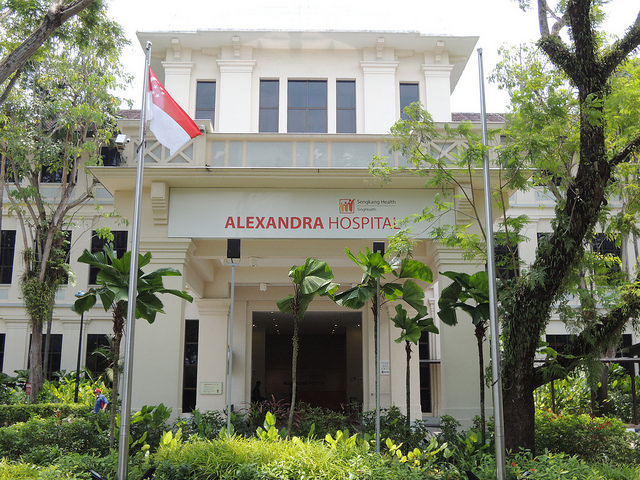Health Minister Gan Kim Yong, at this year's Committee of Supply debate, has explained the problem full hospitalisation insurance coverage poses - it encourages the "buffet syndrome" (over-consumption from some patients), and "unnecessary treatment", which results in over-charging/servicing from certain doctors/healthcare providers.
This, in turn, causes healthcare costs to spiral upwards and the knock-on effect of making medical insurance premiums creep upwards and out of reach of people.
Gan said that co-payment plays a role in "ensuring our healthcare system is sustainable: by emphasising personal responsibility in healthcare, by encouraging service providers to focus on appropriate and cost-effective interventions, and nudging patients to make prudent decisions in healthcare services".
Thus, the move to mandate at least a 5% co-payment on hospital bills from policyholders is suppose to nudge Singaporeans towards not over-consuming medical services.
From today, new hospitalisation policies must include 5% co-payment, and the co-payment is capped at at least $3,000, subjected to individual insurance company's considerations.
However, we have some questions following this announcement:
1. Why 5 per cent?
The Ministry of Health (MOH), in its press release, mentioned that "the zero co-payment feature of full riders pushes up overall healthcare costs in Singapore".
It explained that the over-consumption, over-servicing and over-charging of healthcare services will lead to faster and larger increases in medical costs.
In other words, MOH has explained that the zero co-payment feature is not ideal as it leads to a larger increase in healthcare costs.
However, it did not justify for the need of a 5 per cent co-payment, and not 1 per cent or 3 per cent.
Using the history of GST as an example, GST was first introduced at a rate of 3 per cent in April 1994, before an increase of 2 per cent across two years (2003-2004).
The Health Minister can consider explaining why 5 per cent was used as the benchmark.
Was Medisave limits a consideration? For instance, MOH mentioned that 99 per cent of all inpatient bills at 5 per cent co-payment would fall within the Medisave limits.
Moreover, what if a 5 per cent co-payment is unable to stop the rapid increase of healthcare costs?
Will the Health Minister subsequently implement a 7 to 8 per cent co-payment instead?
2. Will the $3,000 co-payment cap lead to a "premium buffet syndrome"?
Surely, the $3,000 cap is to ensure that medical bills are still manageable for patients. To hit the $3,000 cap, the bill incurred would be $60,000.
However, what measures are there to stop a patient who forked out a $3,000 co-payment from wanting even more medical treatment? Psychologically, they've plonked down good money and would naturally want to extract more 'value' out of their treatment. For them, a $60,000 bill is no different from a $120,000 one - they still pay $3,000. Would medical bills past the $60,000 mark balloon?
From another perspective, what's stopping doctors from 'upselling' treatments? For a patient whose bill is $55,000 ($2,750 co-payment), the doctor could 'upsell' a treatment that costs an additional $30,000 for a 'just $250 more'.
This would not help MOH in preventing costs from spiraling upwards.
In other words, MOH may have prevented the "buffet syndrome" but has caused in a "premium buffet syndrome".
[related_story]
3. Is enforcement that difficult?
Currently, we are relying on the Singapore Medical Council's (SMC) Ethical Code and Ethical Guidelines (ECEG) to keep doctors from over-charging. Errant doctors may face disciplinary action from SMC if they flout guidelines.
MOH has also set up a committee to come up with a medical fee benchmark that will be unveiled in the second half of 2018. The benchmark is supposed to keep healthcare costs in check and let patients consider healthcare costs vis-a-vis their medical needs.
As ST's senior health correspondent noted in her commentary, stopping full riders is just one part of solution to soaring medical bills.
Are these two measures insufficient to keep patients from over-consuming and doctors from over-charging? It would have been good if Minister Gan or Senior Minister of State Chee actually touch on this point.
4. What are insurance companies doing to help keep costs low?
For MOH to step in to introduce such measures, we have to ask whether insurance companies have done enough to ensure costs are kept low.
According to Straits Times, "the total IP and rider claims rose from $858 million in 2015 to $1.05 billion in 2016", with all six insurers having to underwrite losses in 2016.
However, insurance agents whom TODAY spoke to readily admitted that they have been aggressively pushing such policies to young clients. And one of the reason is that the higher premiums mean they get to receive a larger commission.
If that's the case, shouldn't the six insurers bear some responsibility in contributing to the cost escalation. Afterall, the problem started when insurers started offering to pick up the tab no matter its size, by offering "as-charged" plans from 2005 to 2006.
Lastly, with the introduction of co-payment to keep healthcare costs in check, will insurance companies lower their premiums correspondingly?
Top image via Sengkang Health
If you like what you read, follow us on Facebook, Instagram, Twitter and Telegram to get the latest updates.
